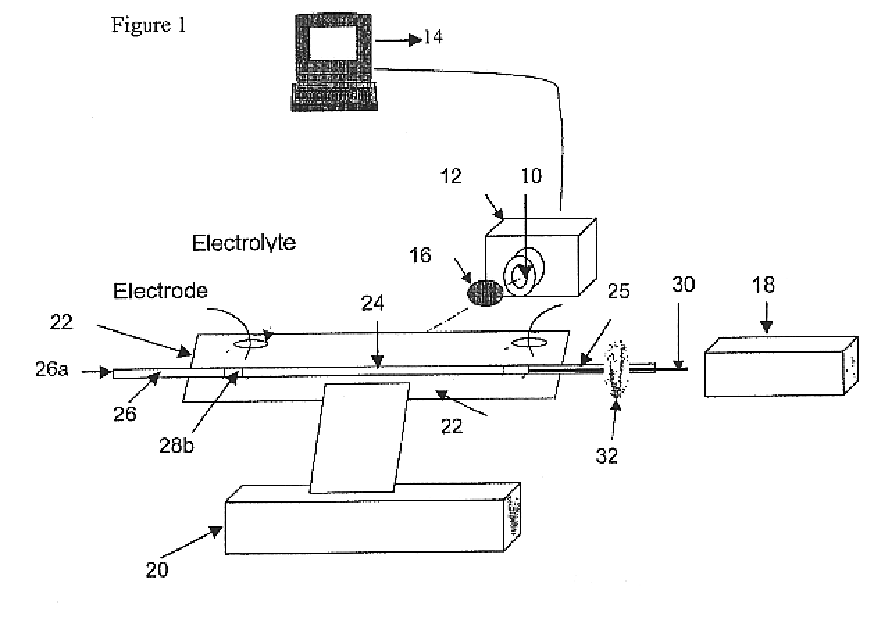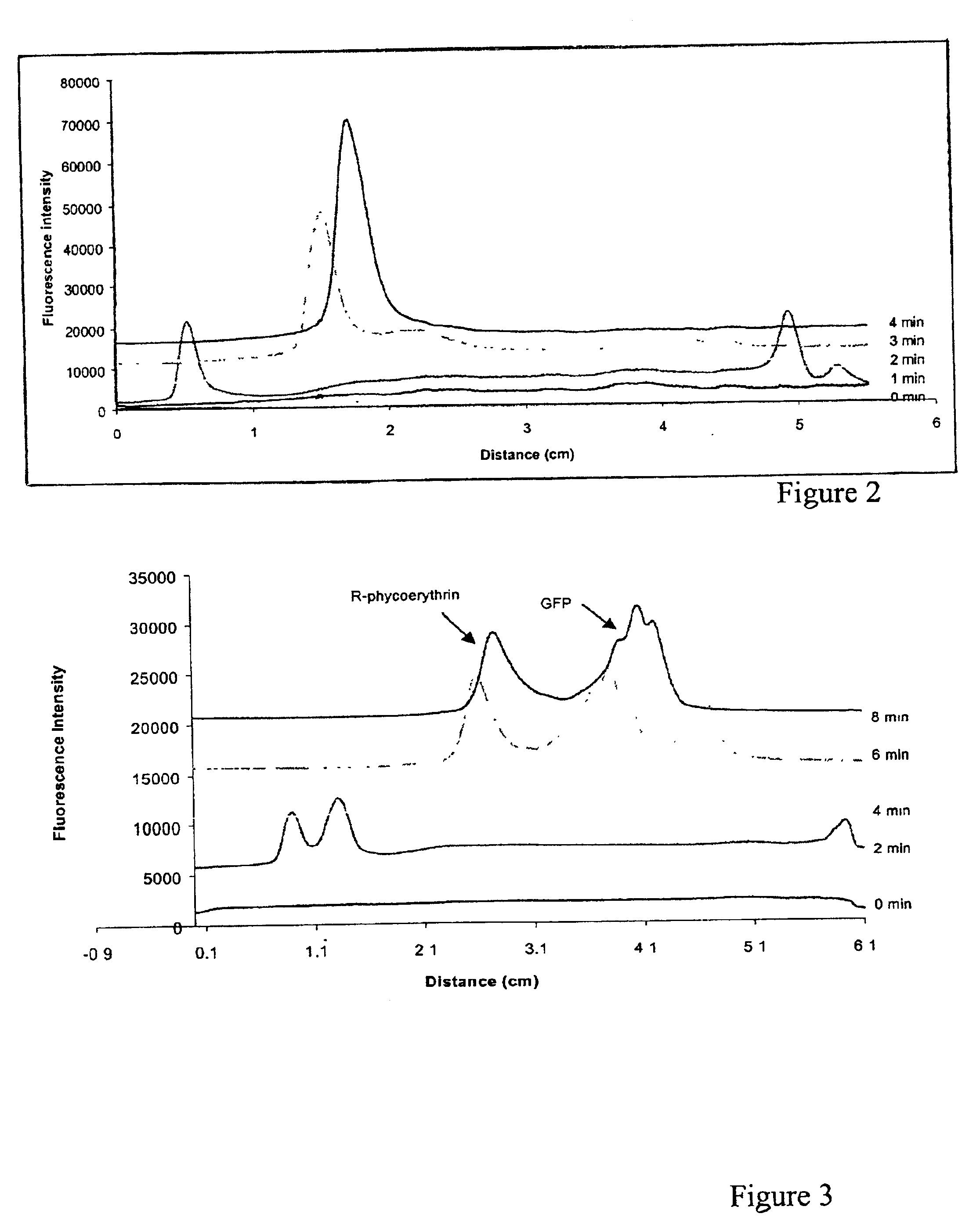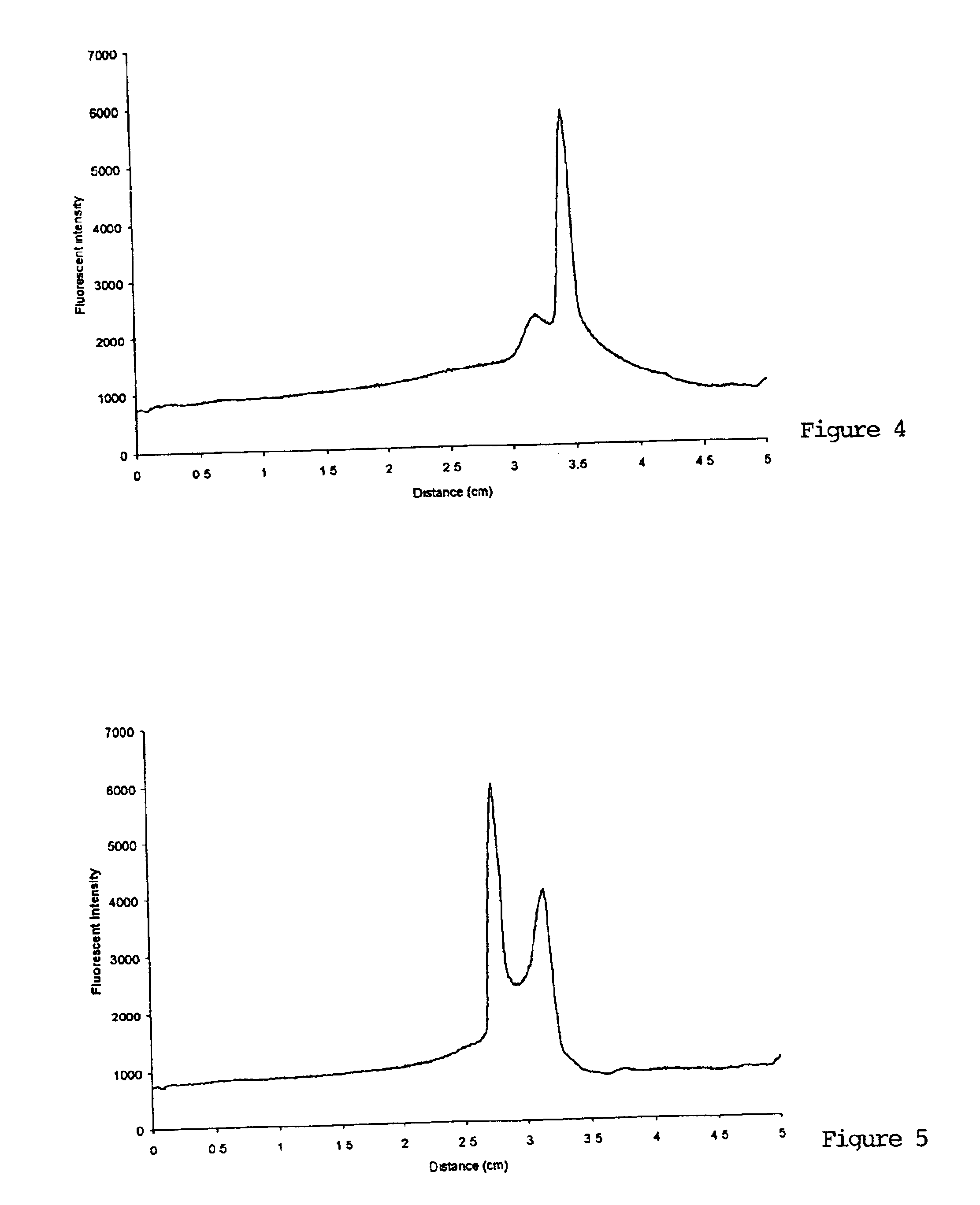Measurement of fluorescence using capillary isoelectric focusing
a fluorescence and isoelectric focusing technology, applied in the direction of semi-permeable membranes, material analysis by electric/magnetic means, electrolysis components, etc., can solve the problems of difficult to obtain reproducible qualitative and quantitative, high dynamic noise, and inability to use more conventional separatory methods
- Summary
- Abstract
- Description
- Claims
- Application Information
AI Technical Summary
Problems solved by technology
Method used
Image
Examples
Embodiment Construction
Apparatus
A schematic of the axially illuminated LIF WCID is shown in FIG. 1. In the system, a small UV lens 10 (A4869, Hamamatsu Inc, Japan) was coupled to an UV-sensitive CCD camera 12, which was controlled by a ST-130 controller (TEA / CCD-1752 / PF / UV, 14, Princeton Instrument, Trenton, N.J. USA). An edge filter 16 (LL-550-s-577 D, Corion, Mass., USA) was placed in front of the camera. The camera 12 was thermoelectrically cooled down to −40° C. and all the parameters were adjusted to get a clear image. The electropherogram was obtained by binning perpendicular to the capillary axis to get a better signal to noise ratio.
The power supply (not illustrated) was a RE-3002B (Regulated High-voltage supply, Mass). An air-cooled argon ion laser 18 (Cyonics, CA) was used as the excitation source. An x-y translatable stage 20 was used to facilitate adjusting the capillary cartridge to let the laser light pass axially through the capillary.
A cartridge 22 carrying separation capillary 24 is also ...
PUM
| Property | Measurement | Unit |
|---|---|---|
| pore size | aaaaa | aaaaa |
| pore size | aaaaa | aaaaa |
| pore size | aaaaa | aaaaa |
Abstract
Description
Claims
Application Information
 Login to View More
Login to View More - R&D
- Intellectual Property
- Life Sciences
- Materials
- Tech Scout
- Unparalleled Data Quality
- Higher Quality Content
- 60% Fewer Hallucinations
Browse by: Latest US Patents, China's latest patents, Technical Efficacy Thesaurus, Application Domain, Technology Topic, Popular Technical Reports.
© 2025 PatSnap. All rights reserved.Legal|Privacy policy|Modern Slavery Act Transparency Statement|Sitemap|About US| Contact US: help@patsnap.com



